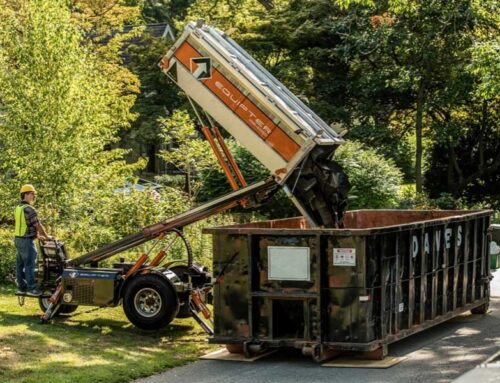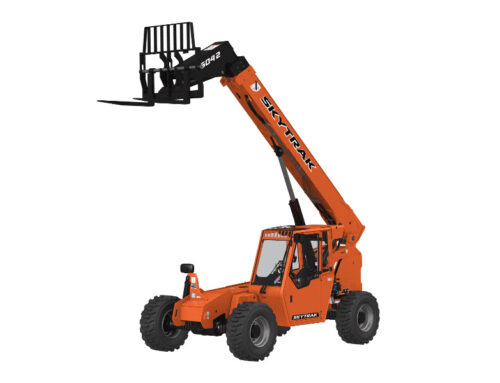Using Scissor Lifts and Boom Lifts in Cold Weather
As winter continues to hit us with bitter temperatures, many face challenges when it comes to operating heavy equipment outdoors, particularly when using scissor lifts and boom lifts. Whether it’s for construction, maintenance, or other outdoor work, cold weather conditions can significantly impact the jobsites and equipment. To ensure your crew remains productive and safe, it’s essential to understand how cold weather affects equipment and how to adapt to these challenging conditions.
Here are just a few things to keep in mind when using scissor lifts and booms lifts in cold weather:
-
Cold Weather Effects on Aerial Lifts
Both scissor lifts and boom lifts are designed to perform in a variety of environmental conditions, but extreme cold can introduce some challenges, including:
- Battery Performance: Cold temperatures can cause batteries to lose charge more quickly, affecting the performance and run time of the lift. Also, cold temperatures can severely damage batteries that are left uncharged in the cold.
- Hydraulic Fluid Viscosity: Low temperatures can make hydraulic fluids thicker, which may slow down the movement of the lift’s boom or platform. This can lead to slower response times. If the machine you are using is a equipped with hydraulic pan heaters, block heaters or any other similar cold-weather packages, the equipment should be plugged in overnight.
- Engine Performance: Diesel-powered lifts may struggle to start in extremely cold conditions, and the engine may need additional time to warm up and operate at full efficiency. Some machines are equipped with glow-plugs to help them start in cold temperatures. If you are not familiar with how to use or operate the glow plugs, you should refer to the user manual.
- Rubber Tires: In freezing temperatures, rubber tires can harden, decreasing traction and increasing the likelihood of slipping or getting stuck.
- Control and Electrical Systems: Cold weather can affect wiring and electrical components.
-
Pre-Operation Inspection and Maintenance
Before operating scissor lifts or boom lifts in any weather, you should perform a pre-operation inspection or walk-around of the equipment. You can reference the user’s manual as a reference for completing a through pre-operation inspection.
-
Operation Tips in Cold Weather
Once the equipment is inspected and ready for use, operators need to be mindful of how to operate scissor lifts and boom lifts safely in freezing conditions. Here are some useful tips:
- Warm Up Equipment: Allow the lift to warm up for a few minutes before use, especially if the engine is cold. This will help the hydraulic systems and engine run more smoothly.
- Avoid Sudden Movements: Cold weather can make the lift’s controls less responsive. Avoid sudden or jerky movements to reduce the risk of equipment malfunction and to keep workers safe.
- Monitor Battery Charge: Check the battery regularly to ensure it maintains a sufficient charge. Cold temperatures can drain batteries quickly.
- Watch for Slippery Surfaces: Snow and ice can make surfaces slippery, increasing the risk of the lift sliding or becoming unstable. Make sure the ground is free of snow or ice and always check the terrain before setting up the lift.
- Limit Exposure to Extreme Cold: Prolonged exposure to freezing temperatures can wear down equipment faster. When possible, limit the amount of time the lift operates in subzero conditions and provide regular breaks for the equipment to rest.
-
Safety Measures for Operators
Cold weather can increase the risk of accidents or injuries, so safety should always be the top priority. Here are some steps to ensure the safety of your crew when using lifts in cold conditions:
- Dress Appropriately: Cold weather presents unique risks for operators, such as frostbite and hypothermia. Ensure that workers are wearing warm, layered clothing, gloves, hats, and other protective gear.
- Use Fall Protection: In cold weather, workers may be more prone to slipping or losing balance. Always ensure that operators use proper fall protection gear, including harnesses and lanyards, to minimize the risk of accidents.
- Monitor Weather Conditions: Stay updated on weather forecasts and be prepared to pause work if conditions worsen (e.g., snowstorms, high winds, or extremely low temperatures).
- Stay in Communication: Ensure that operators are equipped with radios or phones to maintain constant communication with supervisors or team members in case of emergencies.
-
Renting Equipment for Cold Weather Operations
If you’re renting scissor lifts or boom lifts for cold weather operations, it’s important to communicate your specific needs to the rental company.
Before renting, consider the following:
- Discuss Cold Weather Features: Ask the rental company about cold-weather features or winterized options for scissor lifts or boom lifts.
-
Conclusion
Operating scissor lifts and boom lifts in cold weather requires careful planning and attention to detail. By understanding how cold temperatures impact equipment performance and taking the necessary precautions to maintain and operate lifts safely, you can help your team stay productive and minimize downtime during the winter months. Whether you’re renting or owning the equipment, following these best practices will ensure that your lifts perform reliably, your workers stay safe, and your projects continue moving forward even in harsh conditions.
Always consult your equipment manual for specific winter-weather guidelines and stay in close contact with your rental company to ensure you have the right tools for the job. Stay safe, stay warm, and let the lifts handle the heights!


